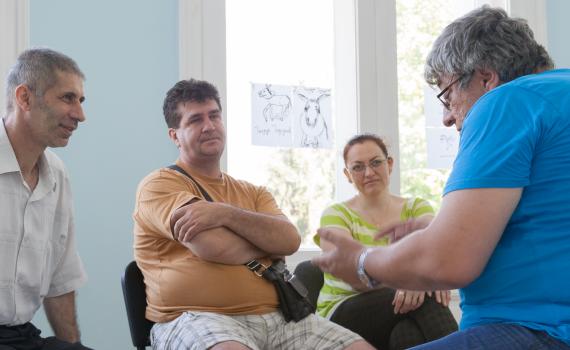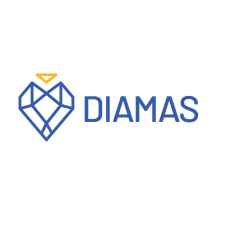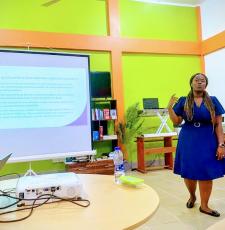
Ugne Lipeikaite, EIFL Public Library Innovation Programme (EIFL-PLIP) Impact Manager, discusses a remarkable Danish public library impact study and asks - can the evaluation approach be applied in developing countries?
Recently Roskilde Central Library in Denmark presented a remarkable study ‘The impact of public libraries in Denmark: A haven in our community’. The study goes beyond traditional library evaluation approaches and measures, such as library visits or book loans, and focuses on public library impact on the citizens, in four different dimensions:
- Emotional impact (Haven): The public library is a haven in everyday life, where citizens find room for contemplation and take time for themselves and each other.
- Intellectual impact (Perspective): The public library is a credible communicator of knowledge and gives citizens an enlightened and critical perspective on life.
- Social impact (Community): The public library is a place where citizens experience togetherness - alone, or with others - and where they experience materials and facilities as common property, without financial barriers to use.
- Creative impact (Creativity): The public library is a source of inspiration and stimulates users' imagination. The public library can also help motivate users to try something new and acquire new skills.
In addition to sharing the results from Danish libraries, the authors of the study published the tool they used, their ‘Impact Compass’, together with an invitation to other libraries to use it, and tips for how it can be used. The questions that I had for myself before reading the study were: is this approach relevant to public libraries outside Denmark and Europe? If so, to benefit from such an approach, to what extent would libraries have to adapt it for local contexts and audiences?
EIFL-PLIP APPROACH
As I went through the study, I found many similarities with what we have been promoting among EIFL Public Library Innovation Programme (EIFL-PLIP) partner libraries in developing and transition countries. Instead of focusing on ‘what libraries do’, we have always encouraged them to look at ‘what changes do public libraries bring to individuals and communities’.
We have been applying this approach to assess results of EIFL-PLIP-funded innovative service projects, where libraries used Result Maps to gather evidence about eight expected outcomes. One of these was ‘increased importance of the library in the community, reflecting user perceptions of the library’s importance to them personally and to the community’. To collect evidence on perceptions about the importance of libraries, we developed sample questionnaires, and guided libraries in collecting testimonials from users, community members and other stakeholders. Similarly, we have made efforts to embed more user-centered approaches to gathering of data and evaluation of public library services by national library authorities in Kenya, Uganda, Zambia, Ghana and Namibia.
COMMUNITY IMPACT IN DEVELOPING COUNTRIES
Going back to the Danish study, I believe that library impacts demonstrated there are true not only for Denmark and Europe. We have worked with many libraries that have similar impacts in their communities, for example:
- Providing emotional support to address isolation and loneliness of senior citizens by reading to them over the telephone, like public libraries in Lima, Peru (emotional impact).
- Organizing and hosting training programmes to support school or university studies, as well as vocational training, including for drop-outs from the formal education system or illiterate populations, like Joburg Libraries in South Africa, which offers an in-person eLearning and ICT training programme for all age groups (intellectual impact).
- Reaching out to marginalized and vulnerable people, like ‘Lyuben Karavelov’ Regional Library in Bulgaria, which builds confidence of unemployed people aged over 40 through a combination of counselling, employment information and ICT skills training (social impact).
- Sparking interest of children, youth and adults to discover their creative potential and even transform it into income generating activities, like Choma Provincial Library in Zambia, which uses library spaces and technology to encourage creativity among young people (creative impact).
- Supporting people with entrepreneurship skills, providing tools and space for their activities, like Meru public library in Kenya, which builds young people’s farming skills and provides them with hands-on practice in a 100 sq metre-farm in the library compound (economic impact).
Considering these and many more examples, we could say that the evaluation model is applicable, and could serve as a tool to capture the very essential - but also less tangible - impacts, which are hardly ever reflected by traditional library statistics.
However, there’s another question: is the audience, that is, the administrators and the decision makers at national and local level, ready to accept this kind of language and the metaphors used to describe the value of public libraries. In countries where libraries lack established performance statistics, or these are scarce, they might still need to collect some quantitative data to back-up qualitative evidence about personal experiences of using local libraries.
SHARE / PRINT








